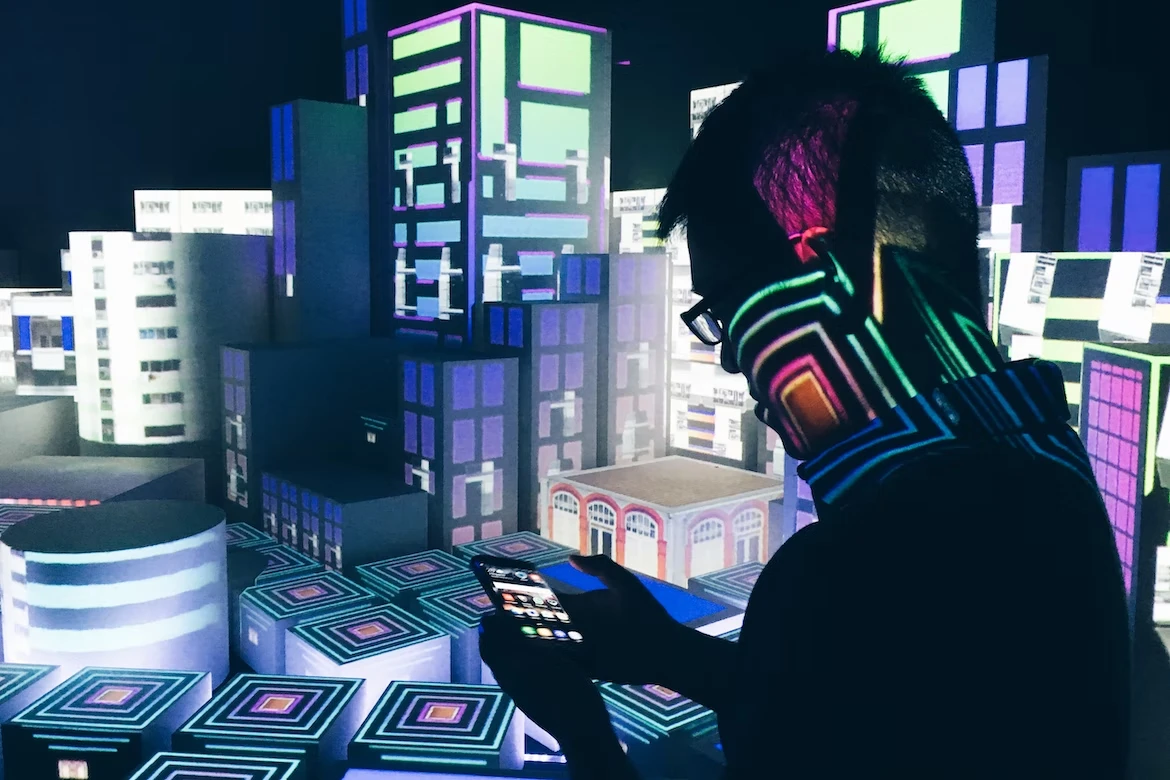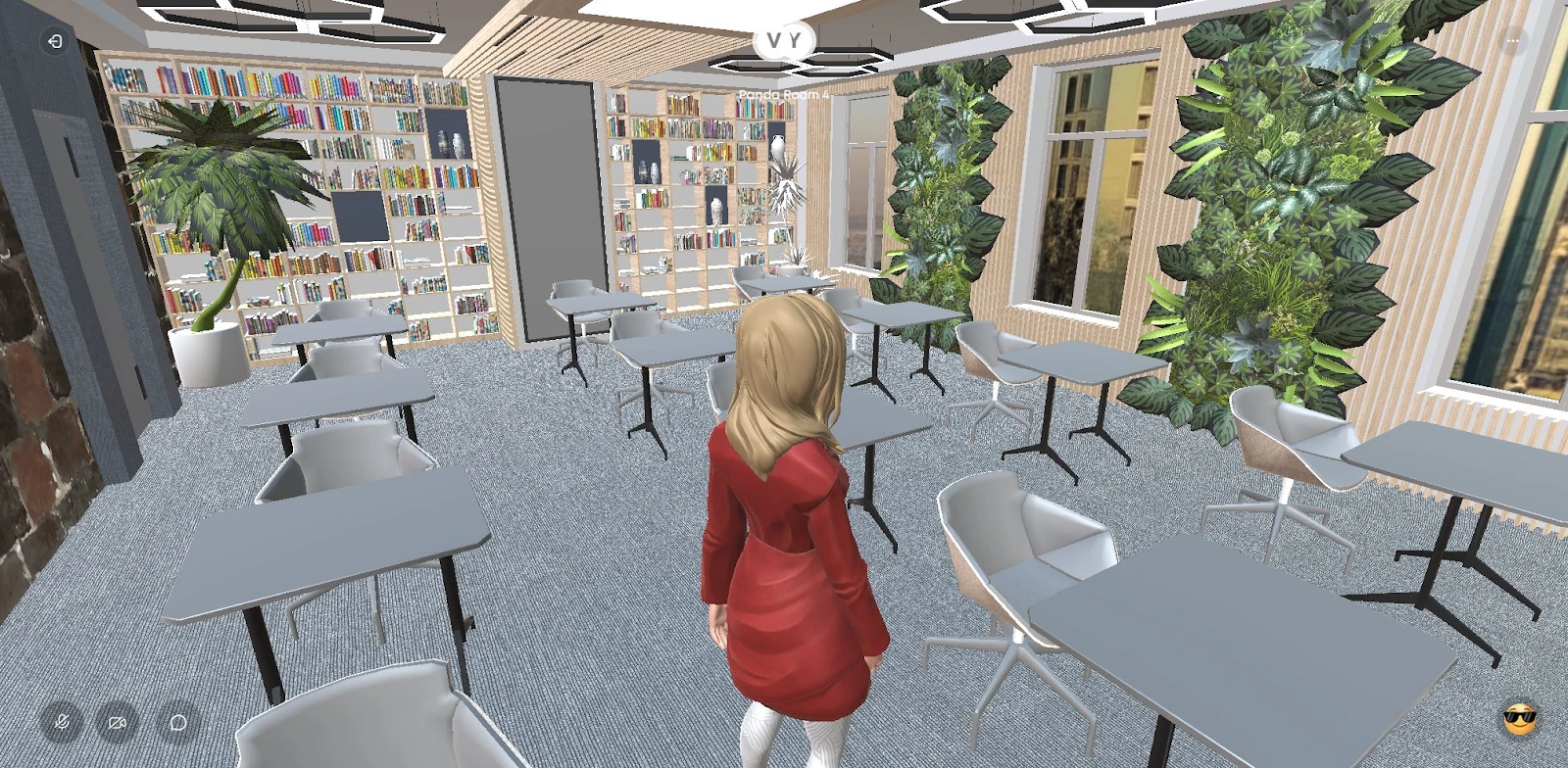Virtual environments are becoming the norm for many of the activities we do on a daily basis, such as playing, learning, and going to work. The world of business is no exception; companies of all sizes are beginning to see what immersive experiences can bring to the table and experimenting with virtual showrooms, 3D training, and various simulations.
In this article, we will evaluate the impact that new technologies like virtual reality are having on corporate education and development - and see some examples of successful initiatives that show some of the things you can already do.
What is a Virtual Environment for Business?

By now, it’s likely you have heard many people talking about the metaverse and how it’s going to impact everything we do - from playing games to meeting with our friends and even sitting for classes. So, what is the metaverse, exactly, and what are we talking about when we refer to virtual environments or 3D virtual environments for business?
Let’s start with the metaverse. This concept is a convergence of our digital and physical lives; an immersive virtual world enabled by various technologies such as virtual reality, augmented reality, and mixed reality. Virtual environments, in particular, are the different spaces we can create to share the metaverse.
Although the metaverse is still pretty much in development (we will have to wait a few years to see what shape it takes, exactly), there are numerous companies already using virtual experiences to keep their customers close and their employees informed. So, how are 3D environments leading to new opportunities for companies, big and small?
The Features of Virtual Businesses
The metaverse was designed to connect different communities and worlds. In many cases, they even have their own currencies, which consumers can use to do virtual commerce, learn, and carry out daily activities.
One of its main characteristics is the creative freedom the use of virtual and augmented reality allows - no matter if it's already connected to a wider metaverse or not. Today, you can create any virtual projects and share them with others. Of course, any brand wanting to experiment with virtual environments will need specific infrastructure and knowledge, but there are billions of dollars flowing into this emergent market as we speak!
This is why we can expect the economic value of the metaverse and virtual environments to rise exponentially in the coming years. Before we delve into how virtual experiences can be used in business, let’s quickly go through their main benefits and downsides.
Advantages and Disadvantages of Virtual Environments
There are many advantages to using virtual environments for training, customer service, and marketing. For instance:
- Employee training: Suppose you want to train people to use a new machine or tool. By using a virtual experience, you can teach employees everything they need to know about the process without having to have them in the same physical space or doing risky maneuvers in a factory.
- Customer service: Many companies are already using virtual and augmented reality to show customers their products. For example, car manufacturers can show clients the different customization options, and retailers can allow people to try on clothes virtually before purchasing them.
- Marketing: many examples of virtual businesses include product launches, concerts, and immersive experiences that are part of larger marketing campaigns. In a virtual world, you are in complete control of what your visitors see.
Virtual environments also have some downsides. For example:
- Reduced Collaboration: Without the adequate tools, virtual environment users might have some trouble communicating effectively with each other. This is why it’s essential to see which platforms offer the best chances for people to get things done in a more collaborative manner.
- Technology limitations and cost: Many virtual experiences require hardware to be truly immersive. For example, a virtual reality headset. Many businesses are not capable of developing or running costly simulations, although each day, there are new tools and platforms that make the process much easier!
7 Virtual Environments That Are Changing How Companies Conduct Business
Let’s go through a few successful examples of virtual environments used for business and explore what makes them special.
IKEA Virtual Reality Showroom
IKEA was one of the first companies to use the power of immersive virtual reality to bring a 3D product experience to its users. The project is called IKEA Virtual Reality Showroom, and the goal is to democratize access to thousands of different items so you can start planning your idea space before your even unwrap your flat packs. The VR experience also allows users to co-create spaces and visualize different combinations.

Matterport Digital Twin Platform
Matterport has recently announced the launch of its Pro3 camera, which can pair with the Digital Twin platform to capture properties and convert them into 3D models you can share and explore. Thousands of businesses have already used Matterport to digitize their spaces, including homes, offices, and factories, and offer them as part of their growing digital library of virtual environments.
Deutsche Bahn Recruiting VR
Deutsche Bahn has been using a library of virtual reality videos to show viewers what it’s like to work in different jobs within the company. For example, you can put yourself in the shoes of a train conductor, an instructor, or an electrician working for the firm. The goal is to help the company recruit new candidates, so DB takes his virtual reality headsets to job fairs so people can experience what it’s like to work for them.

Audi’s Vive/Rift Showroom
Audi is another company that has also been experimenting with virtual spaces for customers. In this case, using a hands-on room-scale VR showroom where you can visualize cars through a seated experience mode (that allows you to inspect your favorite trims from the inside) or a free-roaming mode that lets you to walk around the vehicle. You can also alter the cars’ configuration using a connected tablet and change what you see on the fly!

Cerebrum Progressus (formerly PandaMR) Workspaces
Cerebrum Progressus (formerly PandaMR) is a metaspaces platform designed to bring people together so they can play, work, and interact with each other using unique avatars. The tool offers beautiful community-built, specially designed spaces to host art galleries, events, and private homes. If you’re looking for a customizable virtual business environment, Cerebrum Progressus (formerly PandaMR) is an excellent choice.
STARS (Situational Training And Response Simulator)
STARS, or Situational Training And Response Simulator, is a virtual reality tool that trains law enforcement officers about scenarios they can encounter in the field. For example, active shooter situations, traffic stops, and domestic violence incidents. This 3D virtual environment uses a 300-degree view of situations that are pre-recorded using actors. Although not technically a virtual business environment, it’s easy to imagine how such a tool can be used for training across very different industries.

Try Before you Fly
The groundbreaking “Try Before you Fly” holiday experience was designed by Thomas Cook, a pioneer in the travel and tourism industry, and the agency Visualise. The virtual experience includes bespoke content to enjoy a range of taster experiences. For instance, you can enter a helicopter tour of New York, visit the pyramids of Giza in Egypt or walk around the Skyway in Singapore - all without leaving Thomas Cook’s store.

The Value of Corporate Virtual Environments
The rise of the metaverse and more elaborate 3D and virtual business environments feels, at this point, inevitable. The question is whether your company is ready to embrace the change and explore the many advantages and possibilities that are opening up.
As we have seen, virtual environments can offer numerous benefits to their users, from the ability to create truly immersive experiences to design campaigns only limited by the brand's imagination. There are also some downsides to keep in mind, such as the risk to true collaboration when not using the correct tools.
If you are looking for a platform specifically designed to bring people together in a virtual business environment, check Cerebrum Progressus (formerly PandaMR) solutions. Cerebrum Progressus (formerly PandaMR) is a new era of 3D, offering multiple community-built metaspaces you can use as virtual homes, offices, and event venues. If you’re interested in discovering new opportunities in the metaverse, join us today!


